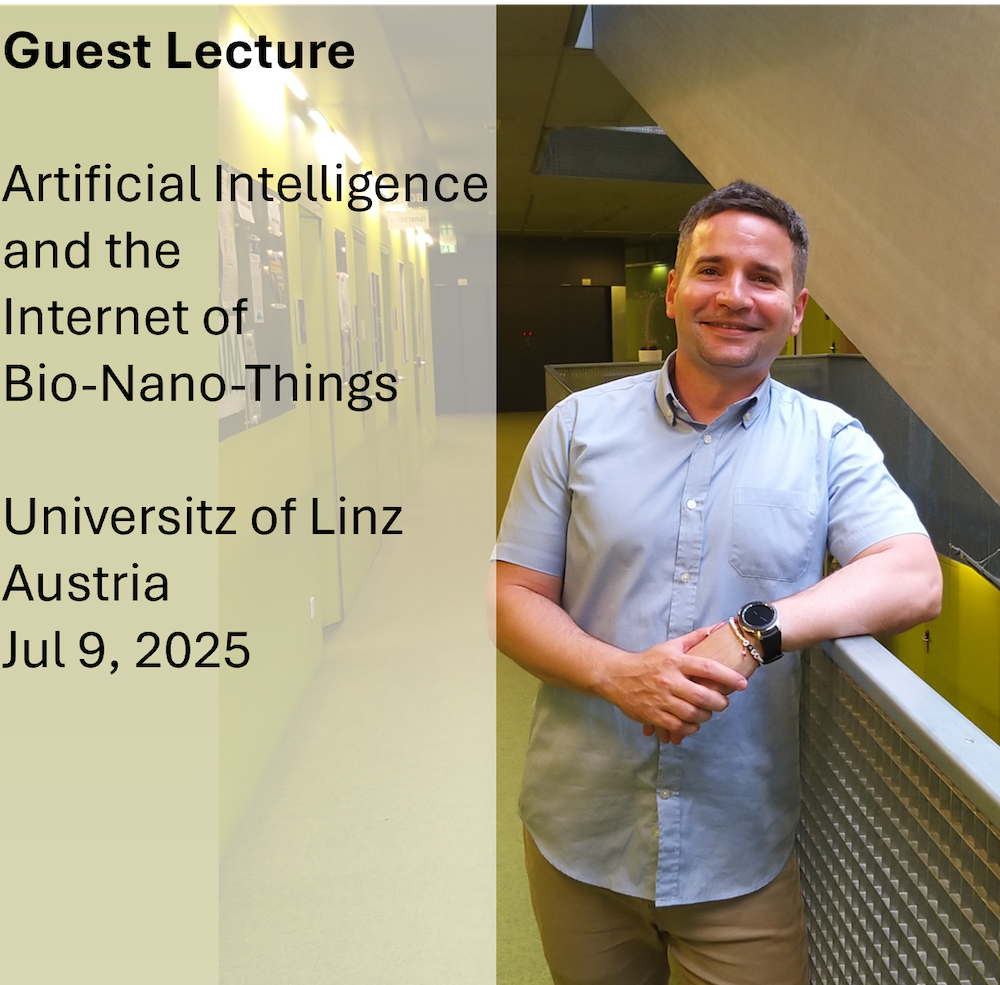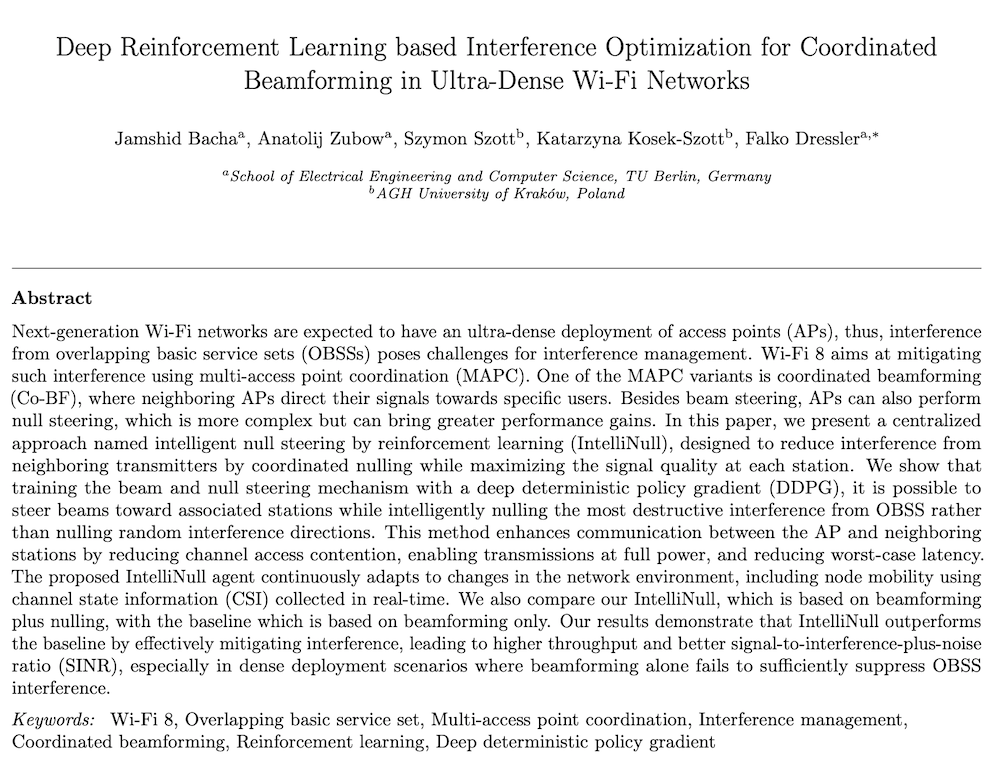Literature Database Entry
khanzadeh2024ql-based
Roya Khanzadeh, Stefan Angerbauer, Jorge Torres Gómez, Andreas Springer, Falko Dressler and Werner Haselmayr, "QL-based Adaptive Transceivers for the IoBNT Communications," IEEE Transactions on Molecular, Biological and Multi-Scale Communications, vol. 10 (3), pp. 476–480, September 2024.
Abstract
This paper introduces an adaptive transceiver scheme for bio-nano things (NTs) situated within blood vessels communicating through a time-varying molecular channel. The proposed scheme employs a Q-learning-based adaptive transceiver (a so-called QL-ADT), wherein an agent gradually learns how to adapt the transmission parameters to the current state of the channel. A real heart rate dataset is used to estimate the blood flow velocities over time, based on which a time-varying molecular channel is modelled. In the practical implementation of the QL-ADT, an external gateway, situated on the skin, monitors the body’s heart rate over time and interfaces with the NTs through implantable nano devices. The gateway dynamically adjusts the communication parameters of the NTs based on the measured heart rate and what it has learned during the training phase. The proposed QL-ADT scheme showed significant improvement in the achievable raw bit rate (RBR) and error performance for a real heart rate dataset.
Quick access
Original Version ![]() (at publishers web site)
(at publishers web site)
Authors' Version ![]() (PDF on this web site)
(PDF on this web site)
BibTeX ![]()
Contact
Roya Khanzadeh
Stefan Angerbauer
Jorge Torres Gómez
Andreas Springer
Falko Dressler
Werner Haselmayr
BibTeX reference
@article{khanzadeh2024ql-based,
author = {Khanzadeh, Roya and Angerbauer, Stefan and Torres G{\'{o}}mez, Jorge and Springer, Andreas and Dressler, Falko and Haselmayr, Werner},
doi = {10.1109/TMBMC.2024.3420749},
title = {{QL-based Adaptive Transceivers for the IoBNT Communications}},
pages = {476--480},
journal = {IEEE Transactions on Molecular, Biological and Multi-Scale Communications},
issn = {2332-7804},
publisher = {IEEE},
month = {9},
number = {3},
volume = {10},
year = {2024},
}
Copyright notice
Links to final or draft versions of papers are presented here to ensure timely dissemination of scholarly and technical work. Copyright and all rights therein are retained by authors or by other copyright holders. All persons copying this information are expected to adhere to the terms and constraints invoked by each author's copyright. In most cases, these works may not be reposted or distributed for commercial purposes without the explicit permission of the copyright holder.
The following applies to all papers listed above that have IEEE copyrights: Personal use of this material is permitted. However, permission to reprint/republish this material for advertising or promotional purposes or for creating new collective works for resale or redistribution to servers or lists, or to reuse any copyrighted component of this work in other works must be obtained from the IEEE.
The following applies to all papers listed above that are in submission to IEEE conference/workshop proceedings or journals: This work has been submitted to the IEEE for possible publication. Copyright may be transferred without notice, after which this version may no longer be accessible.
The following applies to all papers listed above that have ACM copyrights: ACM COPYRIGHT NOTICE. Permission to make digital or hard copies of part or all of this work for personal or classroom use is granted without fee provided that copies are not made or distributed for profit or commercial advantage and that copies bear this notice and the full citation on the first page. Copyrights for components of this work owned by others than ACM must be honored. Abstracting with credit is permitted. To copy otherwise, to republish, to post on servers, or to redistribute to lists, requires prior specific permission and/or a fee. Request permissions from Publications Dept., ACM, Inc., fax +1 (212) 869-0481, or permissions@acm.org.
The following applies to all SpringerLink papers listed above that have Springer Science+Business Media copyrights: The original publication is available at www.springerlink.com.
This page was automatically generated using BibDB and bib2web.





